DYE
MUSHROOMS
|
MUSHROOM
DYE SAMPLES
|
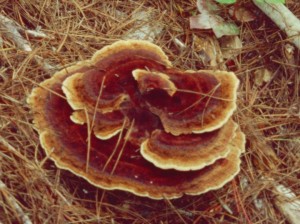 Phaeolus
schweinitzii Phaeolus
schweinitzii
("Dyer's
Polypore")
Many
fresh autumnally colored "dyers polypores" were found
in abundance around Breitenbush Hot Springs - some young with yellow
rims, others without. All were broken up into small chunks and
added together into the dyebath. Four dyebaths later, the dye was still
yielding strong color in the "after-baths"!
Photo
by Dorothy Beebee | \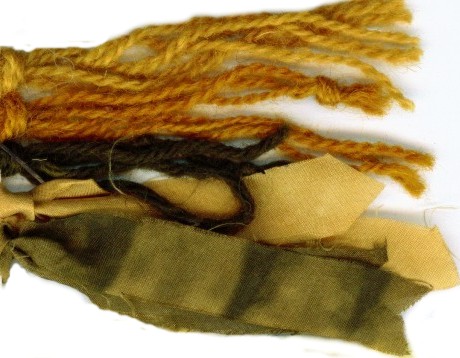
We used
wool and silk samples pre-mordanted with alum (1 knot,> notch in silk)
and iron (4 knots,< notch for silk) |
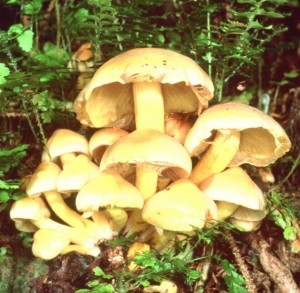
Hypholoma
fasciculare
("Sulphur Tufts")
This
was the first mushroom that Miriam C. Rice used to make her first mushroom
dye over 40 years ago.So it was appropriate that a huge clump was found
on a nearby stump, broken into small pieces and added into a dyepot.
Photo
by Darvin DeShazer
|
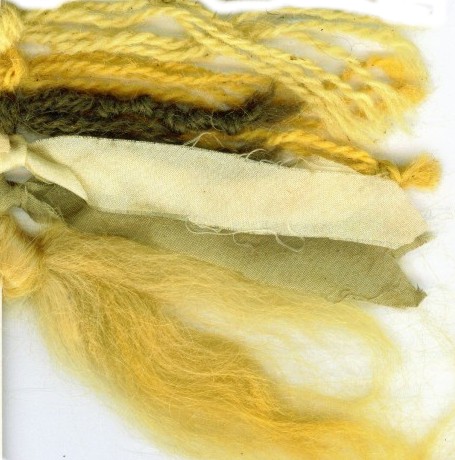
We
simmered this dyebath for about 45 minutes, adding in the alum pre-mordanted
mohair roving contained in a net bag. |
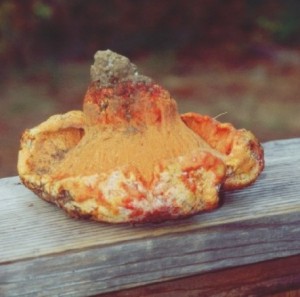
Hypomocyes
lactifluorum
("Lobster
Mushroom")
We
peeled off the bright orange outer skin which is reputed to contain anthraquinone
pigments, and used only that for the dye.
Photo
by Dorothy Beebee |
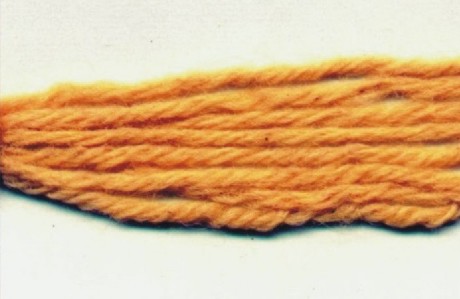
This
was one of the dyes that we processed by having the dyebath in a wide-mouth
Mason glass jar, (stuffed with mushroom bits and fiber samples), in the boiling
canning kettle for 55 minutes. In order to heighten the hues, we added
a dollop of white vinegar (changing the pH from 6 to pH4) and decided
to let the fibres steep overnight to intensify the colors. |
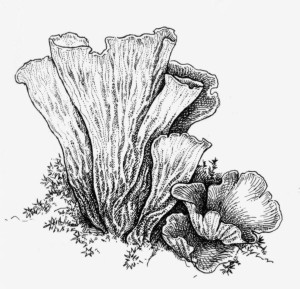
Gomphus
clavatus
("Pig's Ears")
Drawing
by Dorothy Beebee
|
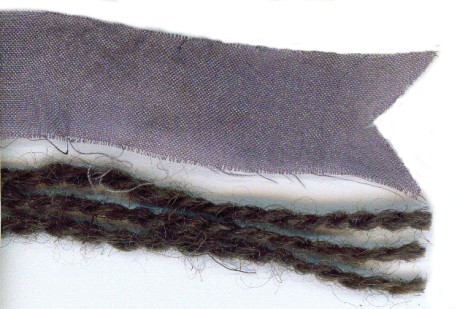
The
only color to emerge from Gomphus clavatus was on wool and
silk fibers pre-mordanted with iron(above). Alum pre-mordanted fibers
showed no dye colors. The group decided that the color was deep enough
after only 8 minutes. This was another one of the dyes that we
processed by having the dyebath in a wide-mouth Mason glass jar in
the boiling canning kettle.
|
Please
send me some more mushroom photos!!! |
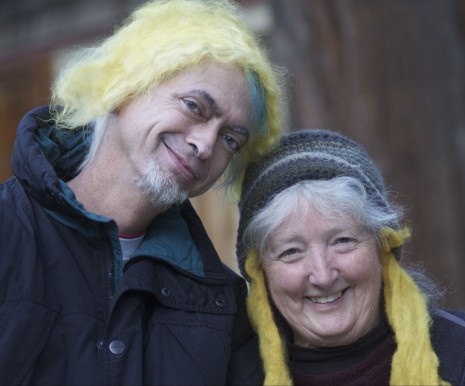
Tom
Volk and Dorothy Beebee modelling the latest in Phaeolus schweinitzii hairpieces!
Photo
by Paul Stamets |
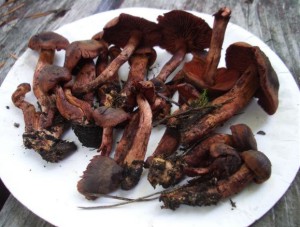
The
mysterious red Dermocybe!
Photo
by Melanie Bjorge
These
Dermocybes were "con-colorus" (cap, gills, and stalk all the
same color) dark red with an orangish cast to it in the sun.
I
found another group of the same species at Breitenbush the next
day, (guided to them by Kathy Biskey!) The
gills were a brilliant iridescent red, and the stalk was much
darker than it appears in this scan to the right, which was done
11 days after mushrooms was found. (They have been kept refrigerated.)
More scans and a detailed description of habitat and the specimens
that we found on October 26th may be seen at http://mushroomobserver.org/13277
|
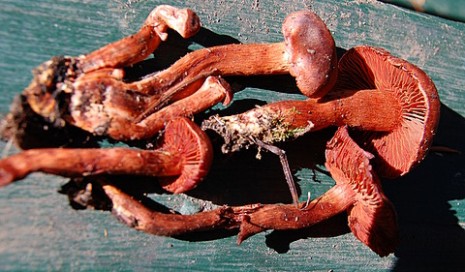
Photo
by Kitty La Bounty
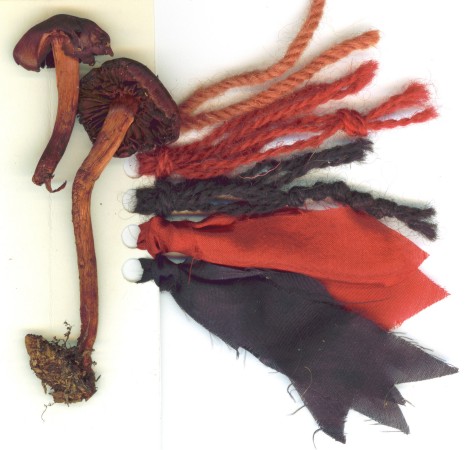
The
wool samples have been pre-mordanted with alum (1 knot) and iron
(5 knots), as have been the notched silk samples. >=alum, and < =iron.
The wool yarn sample at the top is unmordanted, and therefore has
no knot. Mushrooms and fiber samples were steeped overnight together
in a small jar of very hot water on the back of my wood stove....Nov.
3, 2008.
|
| |
|
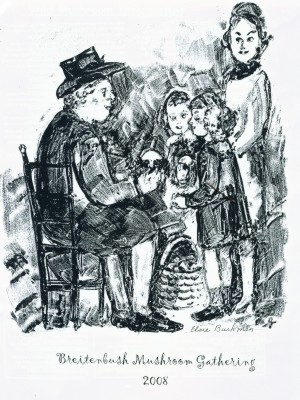
 Phaeolus
schweinitzii
Phaeolus
schweinitzii








